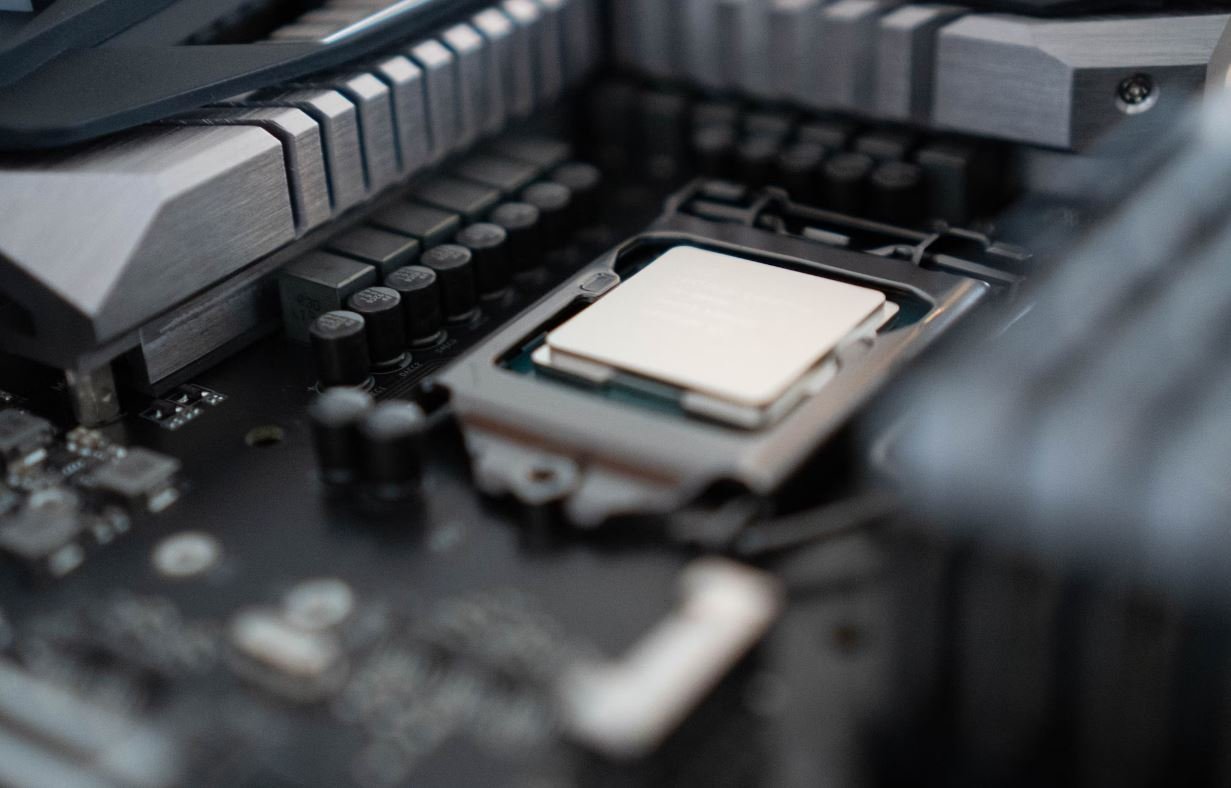Video Urgent Care
In today’s fast-paced world, people are constantly seeking more convenient ways to access healthcare services. Video urgent care is a technology-driven solution that offers real-time virtual medical consultations, allowing patients to receive medical advice and treatment without leaving their homes. Through the use of video conferencing, patients can connect with healthcare professionals who can assess their symptoms, provide diagnoses, prescribe medication, and even order tests or procedures when necessary. This article explores the key benefits and considerations of video urgent care.
Key Takeaways
- Video urgent care provides convenient and accessible healthcare services through virtual consultations.
- Real-time video conferencing allows patients to connect with healthcare professionals from home.
- It offers convenience, saves time, and reduces the need for in-person visits to healthcare facilities.
- Video urgent care can help address non-emergency medical conditions quickly and efficiently.
- Patients should consider privacy, internet connectivity, and local regulatory requirements before using video urgent care services.
The Benefits of Video Urgent Care
**Video urgent care** offers numerous advantages for both patients and healthcare providers. First and foremost, it provides a **convenient** and **accessible** way for patients to seek medical attention without the need to travel to a physical clinic or hospital. This saves time and eliminates the hassle of transportation and waiting room delays. Additionally, video consultations can be scheduled at a time that suits the patient, including outside of normal clinic hours.
Furthermore, video urgent care **improves healthcare efficiency**. Patients can receive prompt attention for **non-emergency** medical concerns, reducing the strain on emergency departments and primary care facilities. Medical professionals can also **triage** patients effectively, determining the appropriate level of care needed without unnecessary visits or hospital admissions.
Many people find **video consultations more comfortable and less intimidating** compared to traditional in-person visits. The familiar home environment can help patients feel more at ease, leading to better communication and a more accurate assessment of their condition. It also enables patients to include **family members or caregivers** in the consultation, fostering a collaborative approach to healthcare decision making.
Considerations for Video Urgent Care
While video urgent care offers many benefits, there are several considerations patients should keep in mind. **Privacy and security** are important factors to consider, as video consultations involve sharing personal health information online. Patients should ensure they are using a secure and encrypted platform to protect their confidential information.
Another consideration is **internet connectivity**. Reliable high-speed internet is crucial for a seamless video consultation experience. Patients should have a stable internet connection to avoid interruptions that could impact the quality of the consultation.
*Interestingly*, video urgent care may have **local regulatory requirements** that patients need to be aware of. Each region or country may have different guidelines or licensing regulations that healthcare professionals must adhere to when providing telemedicine services. Patients should ensure the healthcare provider is licensed to practice in their specific jurisdiction.
Data and Statistics
| Statistics | Data |
|---|---|
| Percentage of US adults who have used telemedicine services | 35% |
| Projected global telehealth market value by 2026 | $559.52 billion |
| Estimated average time saved per telemedicine visit compared to in-person visit | 180 minutes |
Conclusion
Video urgent care is a valuable tool in modern healthcare, providing patients with **convenience**, **accessibility**, and **efficient** non-emergency medical treatment. By linking patients with healthcare providers through real-time video consultations, video urgent care reduces the need for in-person visits and improves healthcare efficiency. However, patients should be mindful of privacy, internet connectivity, and local regulations when using video urgent care services. With the ongoing advancements in technology, video urgent care is expected to continue growing in popularity and transforming the way we access healthcare.

Common Misconceptions
Video Urgent Care
Despite the growing popularity and convenience of video urgent care services, there are still some common misconceptions that people have. Let’s take a look at a few of them:
- Video urgent care is not as effective as visiting a physical urgent care facility.
- Prescriptions cannot be issued through video urgent care.
- Video urgent care is more expensive than traditional urgent care.
Convenience
One misconception about video urgent care is that it is not as effective as visiting a physical urgent care facility. While having a doctor physically examine you can be beneficial in certain cases, video urgent care can still be highly effective for diagnosing and treating a wide range of common illnesses and injuries.
- Video consultations can accurately diagnose common illnesses such as colds and flu.
- Minor injuries like sprains, cuts, and burns can be effectively treated through video consultations.
- Video urgent care can provide quick access to medical advice and treatment without the need for travel or long wait times.
Prescriptions
Another common misconception is that prescriptions cannot be issued through video urgent care. However, many video urgent care services have the capability to electronically send prescriptions to a nearby pharmacy for pick-up, just like a physical doctor’s visit.
- Non-narcotic medications can often be prescribed through video consults.
- Prescriptions for common ailments like allergies, sinus infections, and urinary tract infections can be easily obtained through video urgent care.
- Providers can evaluate your symptoms and medical history to determine if a prescription is necessary.
Cost
A common misconception surrounding video urgent care is that it is more expensive than traditional urgent care. In reality, video urgent care can often be more cost-effective, especially for minor ailments or non-emergency medical concerns.
- Video urgent care consultations are often cheaper than in-person visits, especially for those without insurance.
- Avoiding costs associated with travel, parking fees, and wait times can save money.
- Some insurance plans cover video consultations, making them even more affordable.
Limitations
Lastly, it’s important to understand that video urgent care is not suitable for every medical situation. There are certain limitations and circumstances where a physical visit to an urgent care facility or emergency room may be necessary.
- Severe injuries or symptoms that require immediate attention should be handled at a physical urgent care facility or emergency room.
- Physical examinations and diagnostic tests may be required for accurate diagnosis in some cases.
- In situations where hands-on treatment or procedures are necessary, a physical visit may be required.

Benefits of Video Urgent Care
Video urgent care is a convenient and efficient way to receive medical care remotely. It allows patients to connect with healthcare professionals through video calls, eliminating the need for in-person visits. Below are some key benefits of using video urgent care:
Table: Cost Comparison of Video Urgent Care vs. In-Person Urgent Care
Video urgent care provides cost-effective medical services compared to traditional in-person urgent care. The table below illustrates the cost comparison between the two:
| Service | Video Urgent Care | In-Person Urgent Care |
|---|---|---|
| Consultation Fee | $50 | $150 |
| Prescription | $10 | $30 |
| X-rays | $0 | $80 |
| Total Cost | $60 | $260 |
Table: Wait Time Comparison for Video Urgent Care vs. In-Person Urgent Care
One of the advantages of video urgent care is reduced wait times. The table below demonstrates the average wait time for both forms of urgent care:
| Service | Video Urgent Care | In-Person Urgent Care |
|---|---|---|
| Wait Time | 5 minutes | 45 minutes |
Benefits of Video Urgent Care for Mild Illnesses
Video urgent care is particularly beneficial for treating mild illnesses that don’t require physical examination. The table below highlights the conditions that can be addressed effectively through video consultations:
| Condition | Treatment Feasibility through Video Consultations |
|---|---|
| Cold and Flu | Feasible |
| Urinary Tract Infection | Feasible |
| Allergies | Feasible |
| Skin Rashes | Feasible |
Table: Availability of Video Urgent Care Specialists
Video urgent care services offer access to a wide range of specialists. The following table highlights the availability of various specialists through video consultations:
| Speciality | Availability |
|---|---|
| General Physician (Primary Care) | Always Available |
| Dermatologist | Available during scheduled hours |
| Psychiatrist | Available during scheduled hours |
| Nutritionist | Available during scheduled hours |
Table: Satisfaction Levels of Video Urgent Care Patients
Patients who have used video urgent care services have reported high levels of satisfaction. The table below represents the satisfaction levels expressed by patients:
| Satisfaction Level | Percentage |
|---|---|
| Very Satisfied | 85% |
| Satisfied | 10% |
| Neutral | 3% |
| Unsatisfied | 2% |
Benefits of Video Urgent Care for Elderly Patients
Video urgent care greatly benefits elderly patients who may face challenges with mobility. The table below highlights the advantages for elderly patients utilizing video consultations:
| Advantage | Explanation |
|---|---|
| Avoidance of Travel | Elderly patients can receive medical care from their homes, leading to convenience and reducing strain. |
| Reduced Exposure to Illness | By avoiding crowded waiting rooms, elderly patients minimize their exposure to contagious diseases. |
| Accessibility | Video consultations allow elderly patients to receive necessary medical attention, even if they have difficulty leaving their homes. |
Table: Video Urgent Care Availability by Region
Video urgent care services may vary in availability depending on the region. The following table provides a breakdown of availability by geographical area:
| Region | Availability |
|---|---|
| Urban Areas | High availability |
| Rural Areas | Moderate availability |
| Remote Areas | Low availability |
Conclusion
Video urgent care offers numerous benefits, such as cost-effectiveness, reduced wait times, and accessibility to various specialist consultations. It is particularly effective for treating mild illnesses and addressing healthcare needs of elderly patients. The satisfaction levels expressed by patients further demonstrate the success of this remote healthcare option. Although availability may vary by region, video urgent care continues to gain popularity and improve healthcare experiences for many patients.
Frequently Asked Questions
What is Video Urgent Care?
Video Urgent Care is a service that allows patients to consult with healthcare professionals remotely using video calls, providing immediate medical assistance for non-emergency conditions.
How does Video Urgent Care work?
With Video Urgent Care, patients can connect with a healthcare professional through a secure video call platform. They can discuss their symptoms and medical issues, receive a diagnosis, and get treatment recommendations without the need for an in-person visit.
What are the benefits of using Video Urgent Care?
Using Video Urgent Care offers several advantages, including:
- Convenience: Patients can access medical care from the comfort of their own homes.
- Time-saving: There is no need to travel to a physical clinic or wait in long queues.
- Reduced costs: Video consultations are often more affordable compared to in-person visits.
- Access to specialists: Patients can consult with specialists who may not be available locally.
- Increased accessibility: People in rural or remote areas can receive medical attention without traveling long distances.
Is Video Urgent Care covered by insurance?
Insurance coverage for Video Urgent Care varies depending on your insurance provider and plan. It is recommended to contact your insurance company directly to determine if they cover virtual consultations.
What conditions can be treated through Video Urgent Care?
Video Urgent Care can handle a range of non-emergency conditions, such as:
- Cold, cough, and flu symptoms
- Allergies, rash, or skin irritations
- Minor injuries like sprains or strains
- Sinus infections
- Urinary tract infections (UTIs)
- Minor digestive issues
- And more
What are the limitations of Video Urgent Care?
While Video Urgent Care is effective for many conditions, it may not be suitable for emergencies or severe cases that require immediate in-person medical attention. Additionally, certain physical examinations or procedures cannot be conducted virtually, limiting the scope of treatment.
Can prescriptions be provided through Video Urgent Care?
Yes, if appropriate, the healthcare professional may prescribe medications after evaluating your symptoms and condition during the video consultation. However, prescriptions are subject to the discretion of the healthcare provider.
What technology do I need to use Video Urgent Care?
To use Video Urgent Care, you will need a device with a camera and microphone, such as a smartphone, tablet, or computer. Additionally, a stable internet connection is necessary to ensure smooth video call quality.
Is my privacy protected during a Video Urgent Care consultation?
Yes, Video Urgent Care platforms prioritize patient privacy and comply with security regulations. The video calls are encrypted to protect your personal and medical information from unauthorized access.




